1967 Dime Coin Value: How Much Is It Worth?
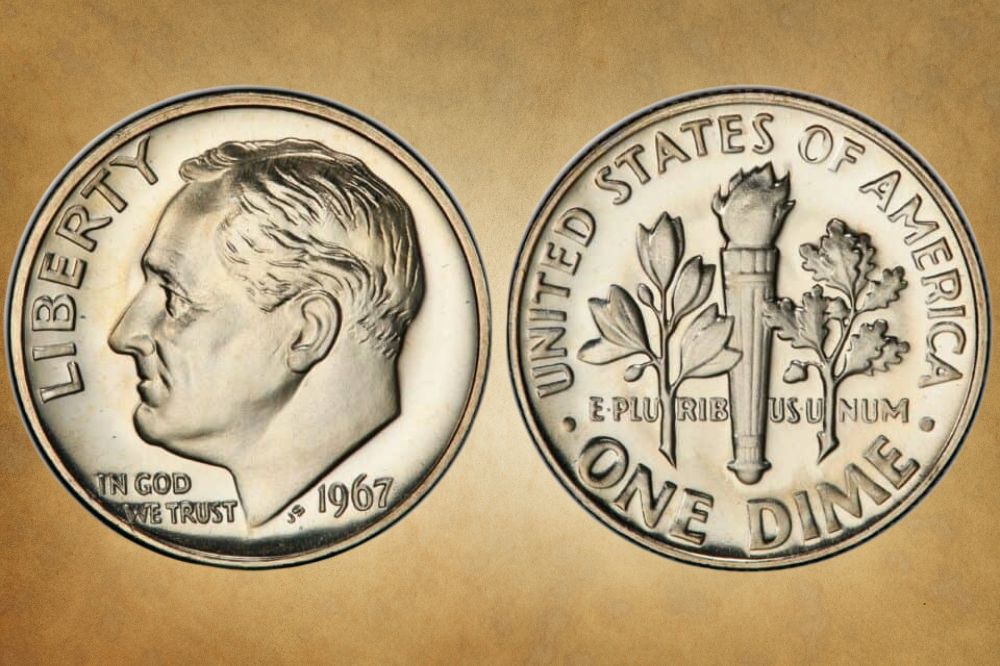
Are you a big fan of President Roosevelt? Then, collecting the Roosevelt Dime series could pique your interest.
The 1967 dime is an interesting one in the long series of Roosevelt dimes. Minted in 1946, just months after the President’s passing, this coin commemorates his life, service, and dedication to eliminating polio.
If you are curious about the 1967 dime value, you’ve come to the right place. These coins are still in circulation many years after they were first minted, so you might be interested in collecting them.
In this article, you will learn about the history of minting the 1967 dime, the coin’s identifying features, value, varieties, and 1967 dime errors worth money.
Let’s jump in!
1967 Dime Value Chart |
||||
| Mint Mark | Good | Fine | Extremely Fine | Uncirculated |
| 1967 No Mint Mark Dime Value | $0.15 | $0.15 | $0.15 | $65 |
| 1967 Special Mint Set Dime Value | – | – | – | $350 |
1967 Dime Value Guides
The U.S. Mint approved the production of two varieties of the 1967 Roosevelt dime. These two are:
- The 1967 No Mint Mark Dime
- The Special Mint Set
Let’s take a look at each variety:
1967 No Mint Mark Dime Value
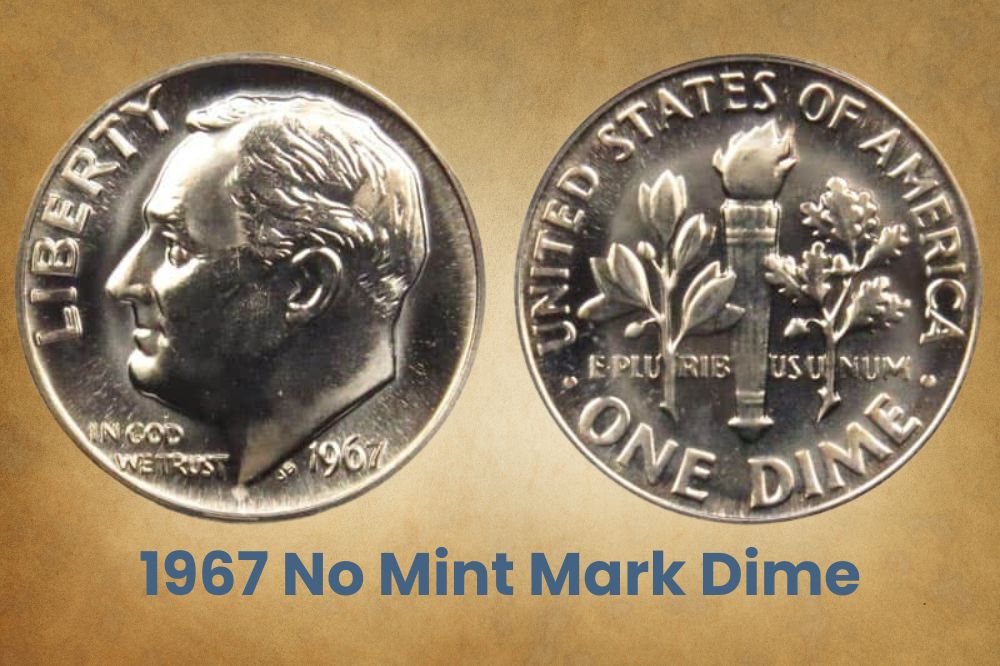
The 1967 dime is part of the Roosevelt Dime series. This coin has an interesting history in that it is the only dime in the extensive history to be minted at the Philadelphia mint.
A total of 2,244,007,320 dimes were struck that year, making this coin pretty common, a factor that eventually affects its value. The coin is made of 98.67% copper and 2.33% nickel.
Numismatics agree that when it comes to modern coins such as the 1967 10C, coins lower than grade Mint State (MS) 63 are only worth their face value. Most 1967 dimes are below MS-60, meaning that most of these coins are not worth more than their face value.
In average circulated conditions, the 1967 no-mintmark dime value is $0.25, while the melt value is $0.02. The coin’s face value is 12 times more than the melt value. This disparity means that the 1967 dime’s real value is not in its metal value but rather in its collectible value.
The highest-graded 1967 coin is an MS-68, sold at $400 at auction. This was a rare, no-mintmark 1967 dime and few, if any, exist today.
Although the 1967 Roosevelt dime is inexpensive, it is still a great addition to your collection, especially if you are a Roosevelt enthusiast.
1967 Special Mint Set Value
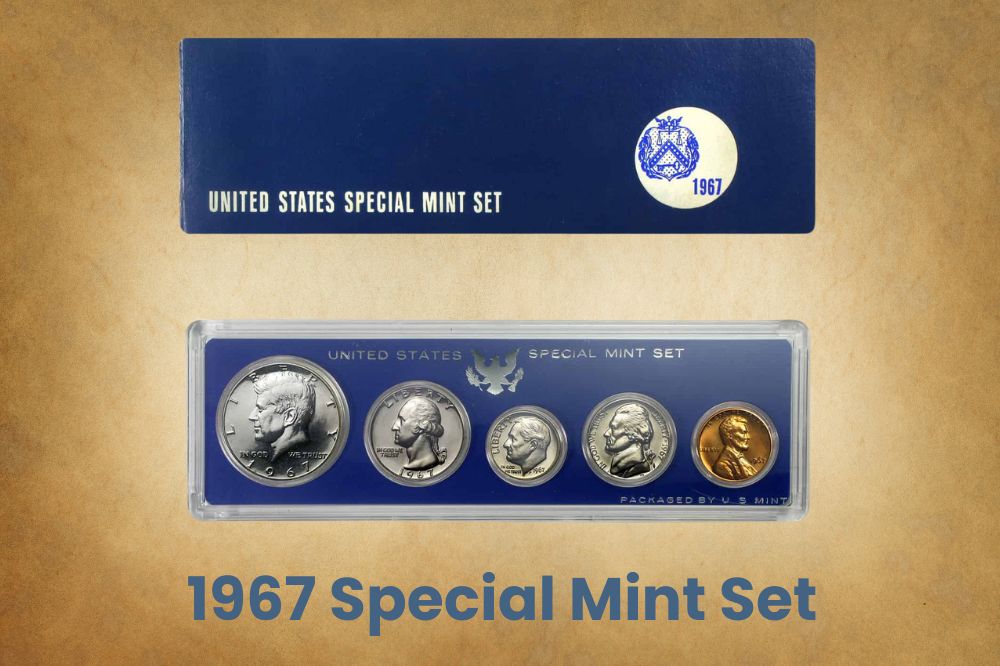
In 1964, a severe coin shortage saw the U.S. Mint take drastic action to meet demand while keeping production costs low.
One of the measures the Mint implemented was ceasing the production of proof coins, usually made for collectors. Proof coins typically have a glossier, clearer, high-definition finish and therefore cost more, requiring special planchet and die preparation.
Ceasing the production of proofs allowed the Mint to allocate more resources toward making more circulation coins to meet demand.
The Mint produced the Special Mint Set in place of the proof coins. The special coins were not as premium as proofs but they were of a much higher quality than the ordinary circulation coins.
The U.S. Mint issued special mint sets in 1965, 1966, and 1967 before resuming normal production of proof sets.
Like the circulation coins, the SMS coins are made of 98.67% copper and 2.33% nickel. A total of 1,863,344 of these coins were produced at the San Francisco mint. Despite their San Francisco origin, the 1967 SMS dimes do not display a corresponding mintmark.
At grade MS-60, the 1967 SMS Dime value is $1, while at the highest known grade of MS-68, the 1967 10C is worth $350, according to the America Numismatic Organization.
Related Posts: 16 Most Valuable Dime Errors
1967 Dime Error
Coins errors can be worth a lot depending on the error type, niche, and the collectors’ demand. Currently, no known significant 1967 dime errors can increase the coin’s value.
Having said that, the Roosevelt dime series is extensive and some known errors have been worth a couple of hundred dollars at auction. It is a good idea to familiarize yourself with the errors most common in the Roosevelt dime series, so you know what to look for when collecting coins in this interesting and vast series.
Here is what to look for:
Missing clad layer
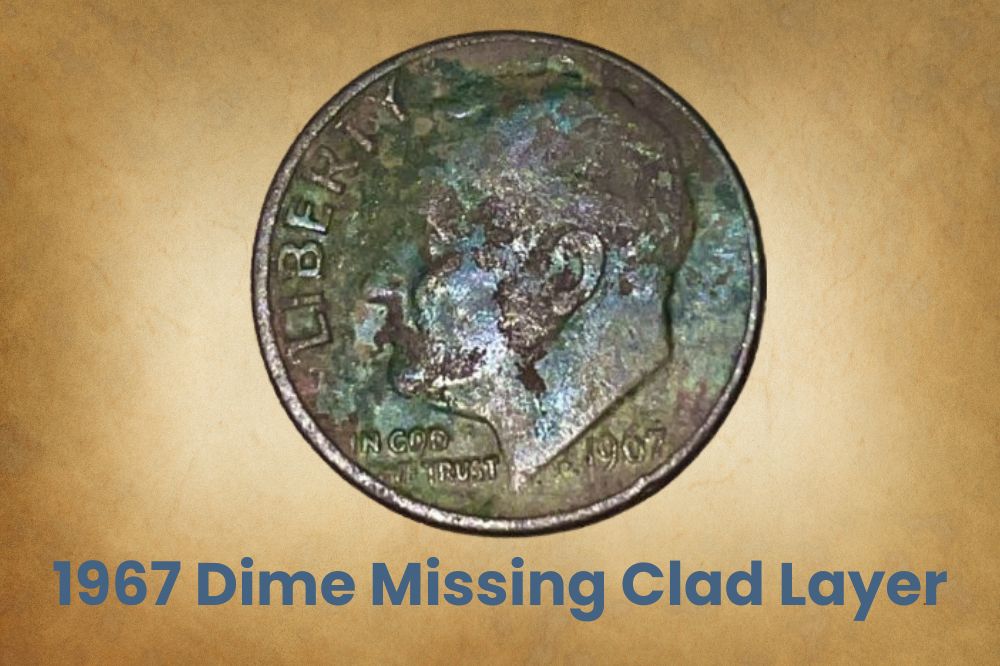
Errors in the minting process can result in some dime planchets missing the copper-nickel coating, resulting in a ”naked dime.” The missing coating exposes the coin’s copper core on either the reverse or obverse side. At the highest grade, missing clad layer error coins cost about $20.
Blank Planchet
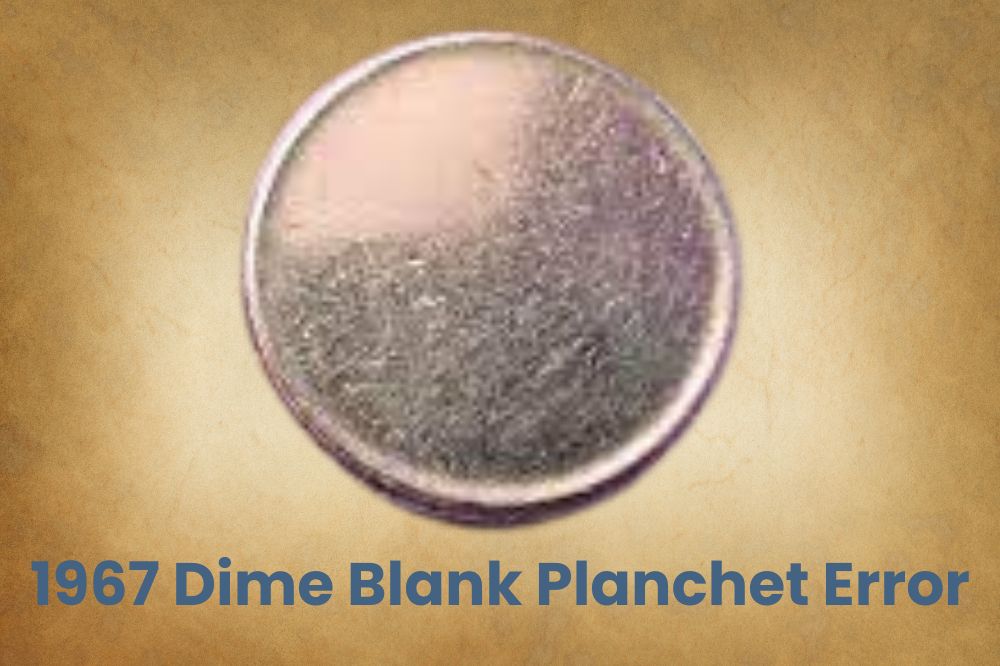
A few Roosevelt dimes have left the mint without a design on the obverse, reverse, or both sides. The blank planchet is also a minting-related error and is typically worth only a couple of dollars because the coin is blank and lacks any aesthetic appeal.
Broadstrike
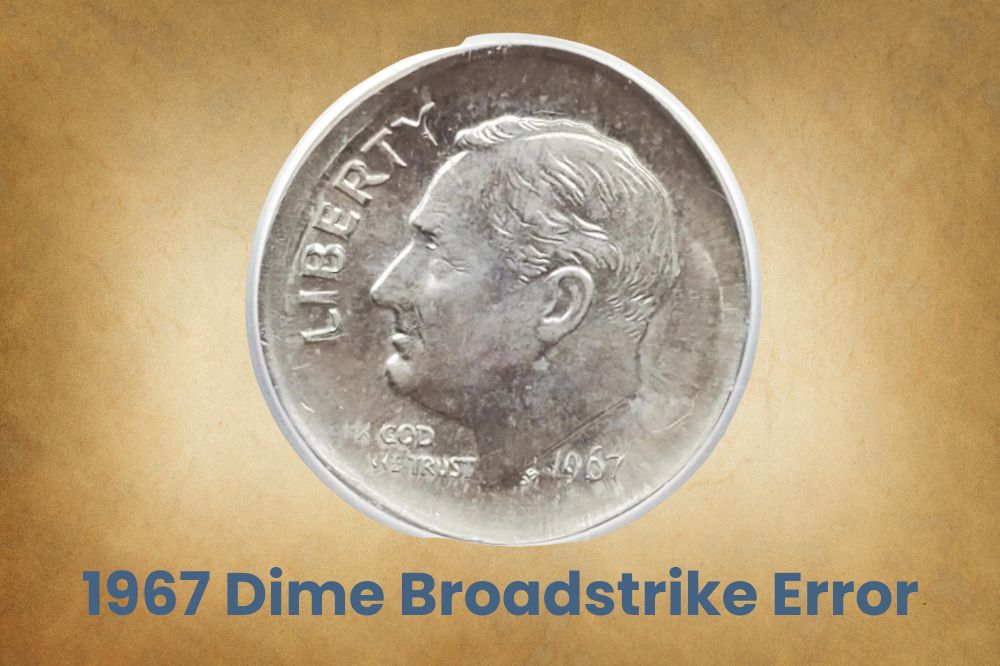
A broad strike error occurs when the die collar is improperly positioned, causing the planchet’s rim to be struck too broadly. This error results in images and lettering on both sides of the coin appearing stretched out and deformed. Broadstrike error coins are worth between $5 and $10.
Clipped Planchet
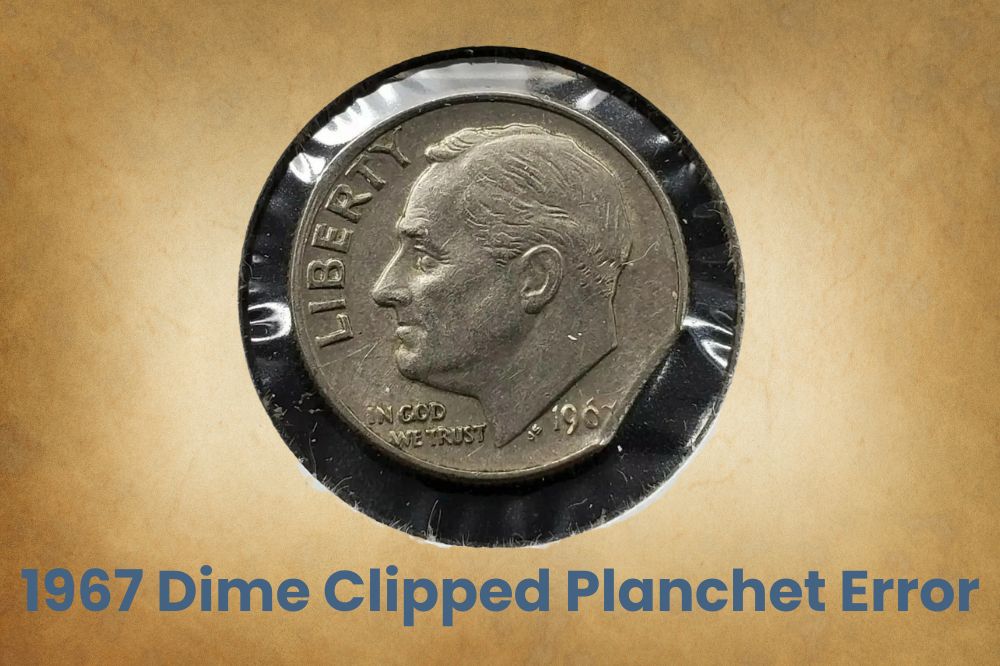
Clipped planchet errors are quite interesting and occur in several Roosevelt coins. This error occurs when the planchet is incorrectly fed into the striking hub, causing the resulting coin to miss a small portion along the edge. Such an error is usually worth between $30 and $40.
Off-Center Strike
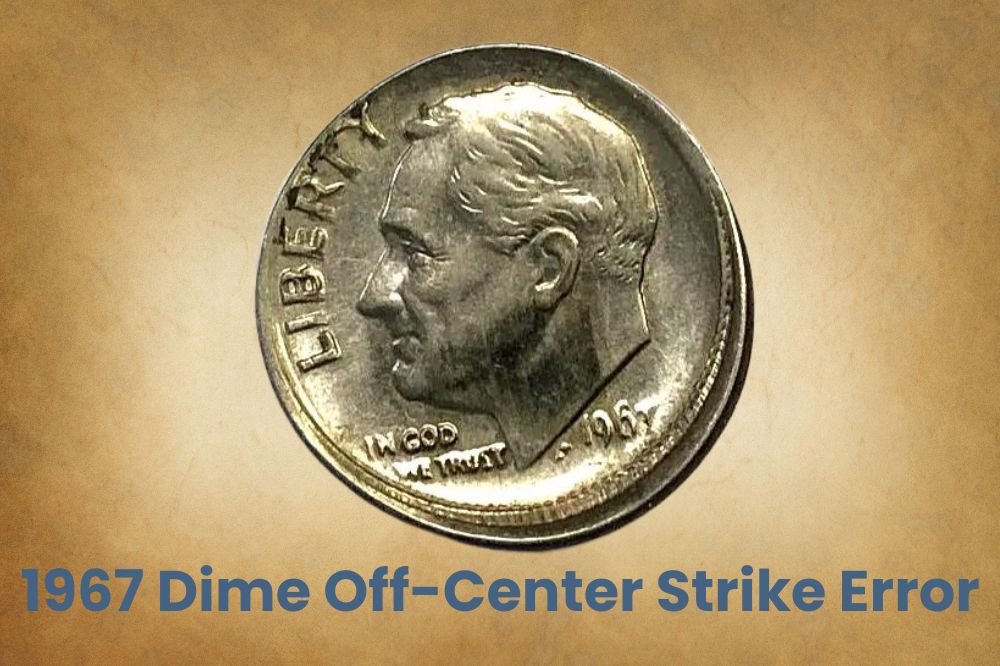
An off-center strike error occurs when the obverse or reverse lettering or image is improperly positioned on the coin. These dimes come out deformed and will have some blank patches on the surface. Depending on how off the design is, an off-center strike error dime can fetch between $15 and $30.
Related Posts: 22 Most Valuable Roosevelt Dimes Worth Money
1967 Dime History
The United States Mint first produced the Roosevelt dime in 1946 to commemorate the President’s life. Issuing the coin was also a way to celebrate his unrelenting efforts to end polio, a contagious disease that, at the time, had ravished entire communities.
In 1945, just after the President’s passing, Congress commissioned John Sinnock, an experienced engraver, to create the coin’s obverse and reverse designs. This proposal meant coming up with an entirely different coin design and doing away with the preceding Winged Liberty Dime.
The Roosevelt Dime Series is long-running and entails many coin types. All three mints: Denver, Philadelphia, and San Francisco, were involved in minting the coins in the series.
However, in 1967, the United States Mint assigned the dime production only to the Philadelphia Mint. The Denver and San Francisco mints were not responsible for producing the 1967 Roosevelt dime.
That year, the Philadelphia mint produced 2,244,007,000 dimes for general circulation. For the first time in coin minting history, only one minting facility was responsible for producing more than 2 billion Roosevelt coins.
Because the coins were minted in Philadelphia, the dimes this year do not feature a mintmark. Rather, the 1961 dimes showcase the chief engraver’s initials, JS, on the obverse.
The early 1960s saw a severe coin shortage and increasingly high silver prices. The U.S. Mint stopped producing silver coins to meet the demand and shifted to using cheaper copper.
In addition, the Mint ceased production of proof sets, which cost more to strike. Instead, it opted to create Special Mint Sets (SMS), which are equally high quality, would appeal to any collector, and are cheaper to produce.
At the start of 1964, U.S. coins were made out of copper and nickel clad, including the 1967 Roosevelt dime.
Let’s now look at the unique attributes of the 1967 dime.
Related Posts: 18 Most Valuable Mercury Dimes Worth Money
how to identify 1967 Dime
Below are the obverse, reverse, and general features of the 1967 Roosevelt dime:
The Obverse of 1967 Dime
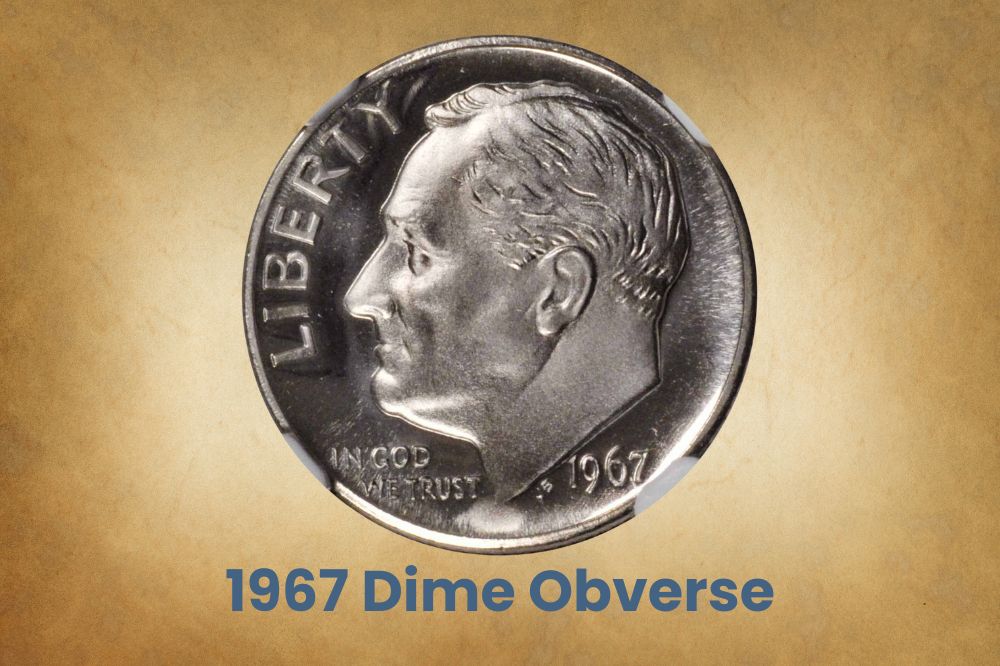
The obverse is the heads or the upward side of a coin. The obverse of the 1967 dime features president Roosevelt’s right-facing bust.
The word LIBERTY is positioned along the coin’s right edge, so it looks like the President is facing it. Still on the right field, close to the President’s throat, are the words IN GOD WE TRUST.
The 1967 dime does not feature a mint mark. Instead, the engraver’s initials are visibly embossed at the bottom left of the bust as ‘JS.’ Right beside these initials is the year of mintage, “1967.”
The Reverse of 1967 Dime
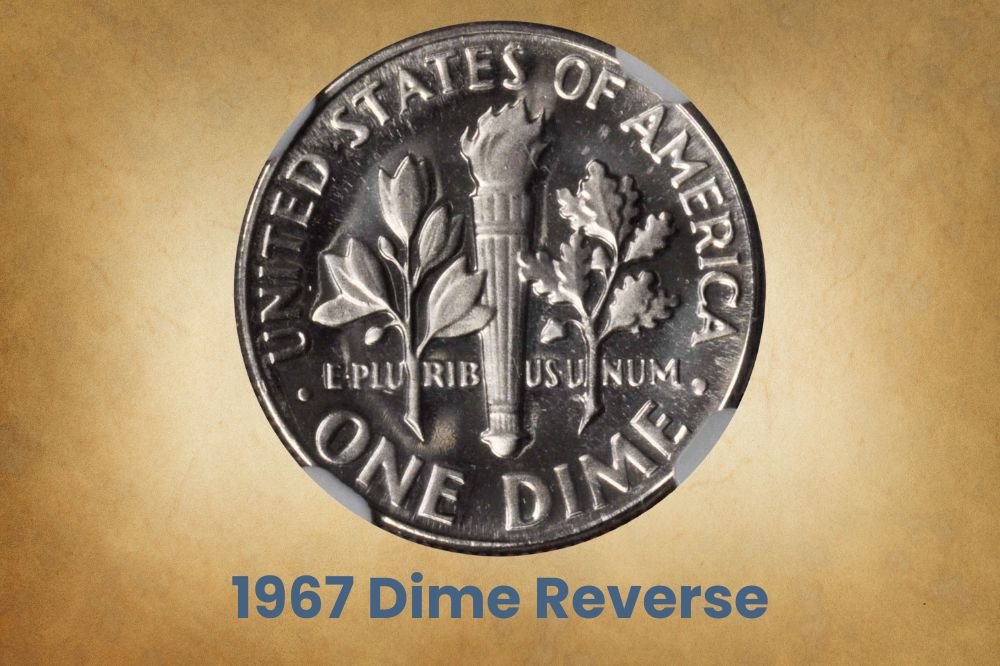
The reverse is also known as the tails or backside of a coin. On the 1967 dime, the reverse features a torch with olive branches on each side.
The torch symbolizes liberty, while the olive branches represent peace, a testament to everything President Roosevelt espoused.
The words E PLURIBUS UNUM appear across the two branches and the torch. The words UNITED STATES OF AMERICA are impressed around the coin’s top edge, while the coin’s denomination, ONE DIME, is found around the coin’s lower edge.
Other Features of 1967 Dime
The 1967 Roosevelt dime contains 91.67% copper and 8.33% nickel. Many collectors wonder whether the Roosevelt 1967 dime is made of silver, but there is no known silver 1967 Roosevelt dime.
Starting 1964, the U.S. Mint stopped using silver to make coins, instead opting for the more affordable copper. So, all dimes in the Roosevelt series, including the 1967 coins are majorly made of copper and do not contain any silver.
The coin measures 0.7 inches in diameter. It has a reeded edge.
Given that the 1967 dime was minted in Philadelphia, it does not feature any mint mark. All U.S. coins minted at the Philadelphia facility typically do not display a mintmark. Coins minted in Denver feature the mintmark ‘D’ and ‘S’ for those made in San Francisco.
Learning about the features of a 1967 dime can help you identify whether you have a rare coin worth a lot of money.
Related Posts: 17 Most Valuable Dimes Worth Money
FAQ
Here are a few common questions collectors ask about the 1967 dime and the Roosevelt dime series.
Is a 1967 Roosevelt dime worth anything?
Most 1967 Roosevelt dimes you will come across will be damaged or worn. If these coins were to be graded, the majority would be lower than grade MS-60 and any dime below this grade is typically not worth more than face value. On average, in circulated conditions, a 1967 dime will be worth about $0.15. If you find a special mint set 1967 dime, the coin might be worth between $1 and $350, depending on its condition.
What is special about the 1967 dime?
The 1967 dime is a no-mintmark coin and is the only one in the Roosevelt dime series that was solely minted in the Philadelphia facility. Other than that, nothing else makes the 1967 dime extraordinarily different. This coin has no known major minting errors and is not as sought after among collectors. Still, this is a good addition to help you build a complete Roosevelt dime series.
Where is the mint mark on a 1967 dime?
If you’ve looked for and cannot find a mint mark on a 1967 dime, it is because there is no mint mark to start with! This Roosevelt dime was minted in the Philadelphia facility, and traditionally coins minted here do not come with a mint mark. The 1967 special mint set dimes were minted in San Francisco, but even these do not have a mint mark.

I have a 1967 sp American dime and it might be the only one in existence
I have a 1967 sp American dime and it might be the only one in existence it doesn’t stick to a magnet and nickel copper would